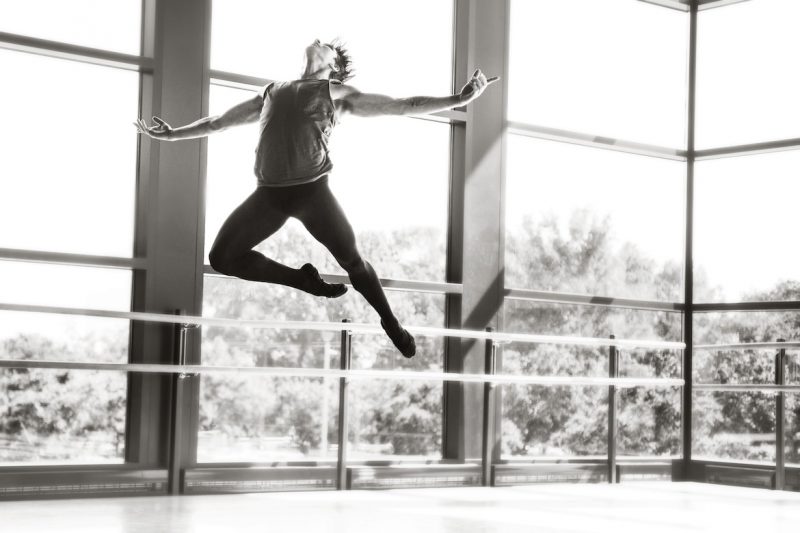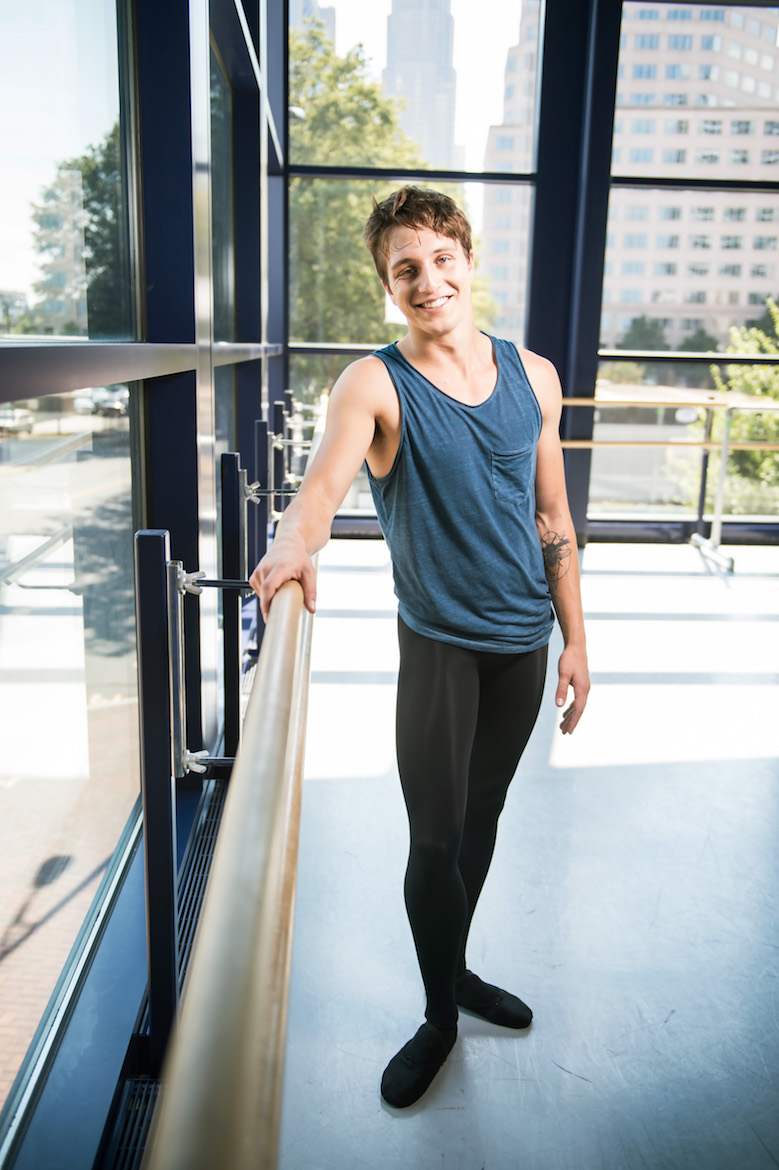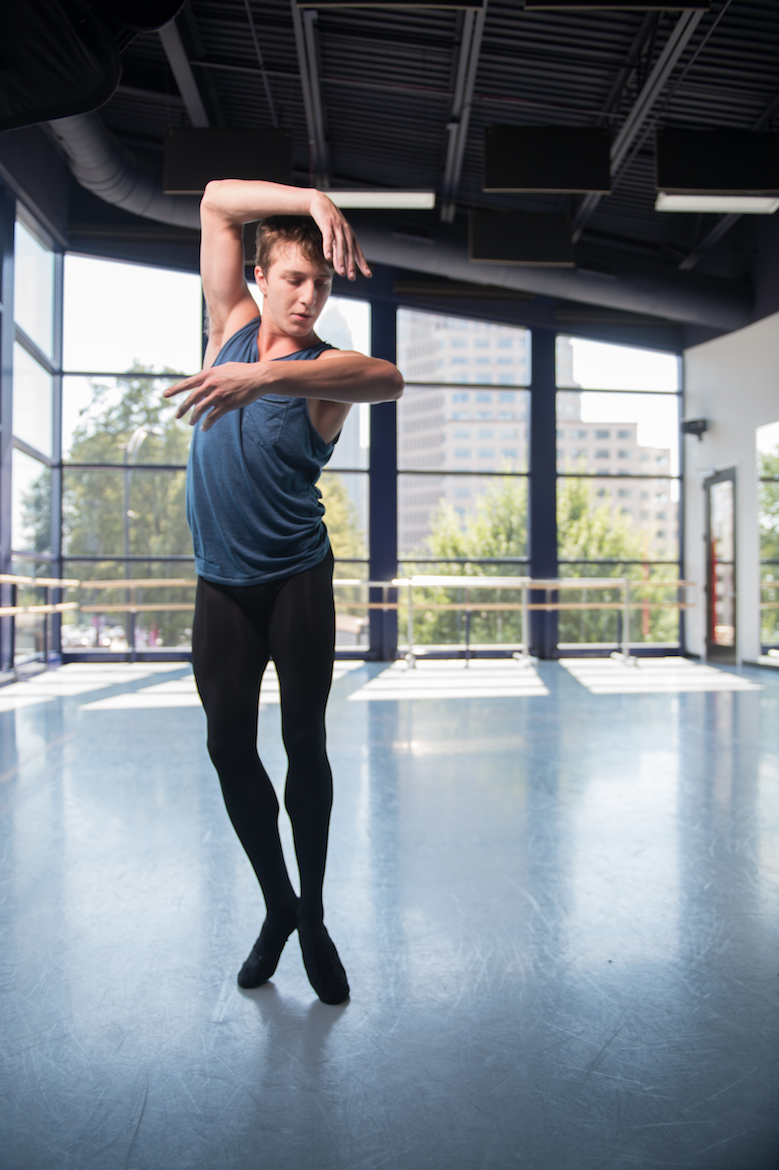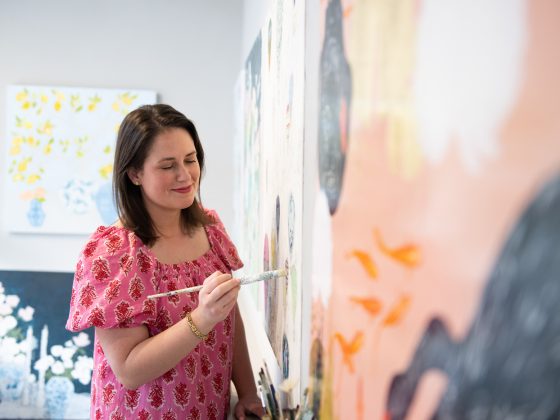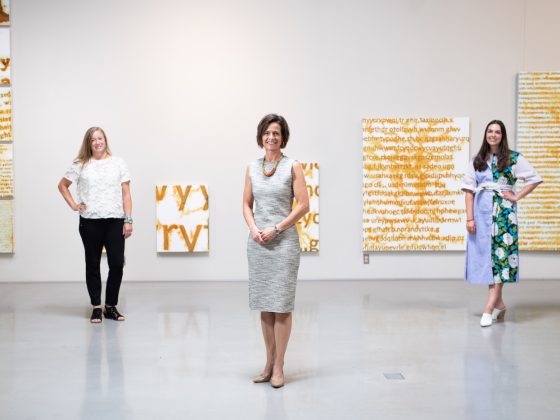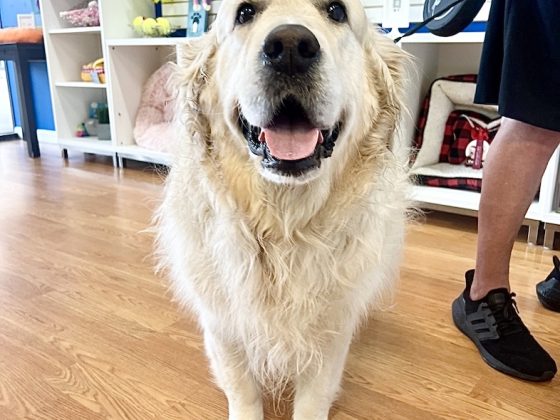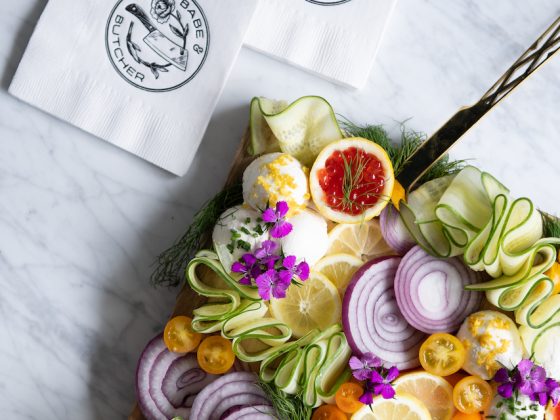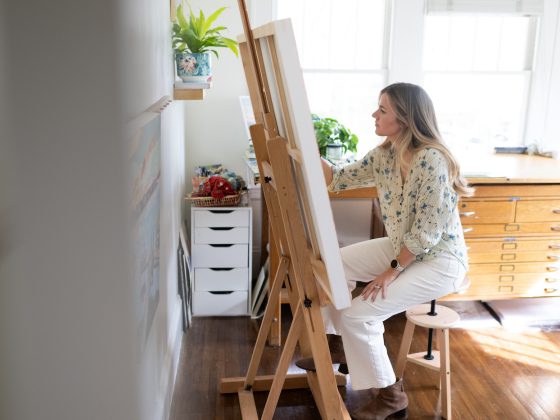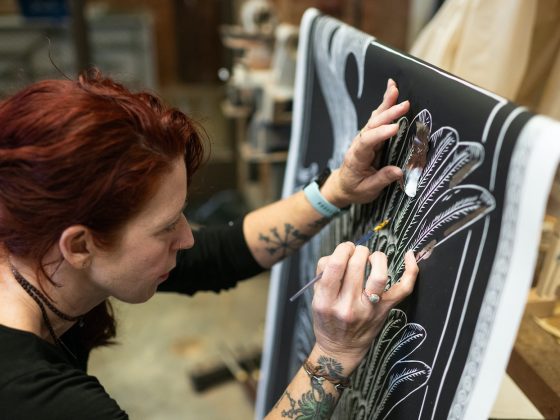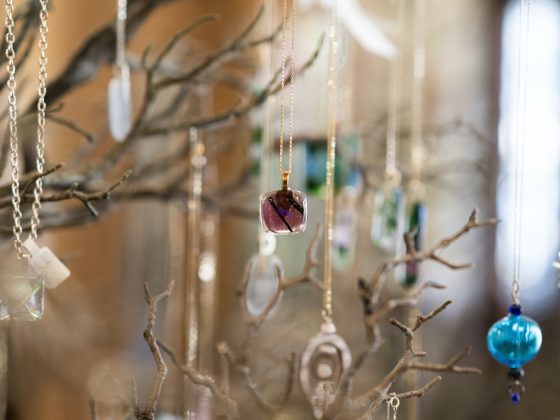Like every dancer—seriously, everyone—at Charlotte Ballet, Ben Ingel looks like he’s never been out of shape. And he probably hasn’t: With the career he’s chosen, he can’t be.
For ballet dancers, form is everything. “Line”—the outline of a dancer’s complete body in steps and poses—defines Ben Ingel’s everyday. In his best moments, he’s both statuesque and fluid. A special kind of flexibility and strength is needed to maintain this dichotomy of perfect pose and liquid motion. It takes extensive practice, sure, but it also necessitates an abundantly healthy lifestyle.
Ben Ingel’s diet consists of lots of health food. “It’s actually hard for me to eat as much as I need to keep up with how many calories I’m burning,” he jokes. His workout regimen changes based on upcoming performances, but it’s always geared toward strength-building exercise: Four to five hours per week in the gym is just the tip of the sweaty iceberg. He also dances daily from nine until six. Some ballets are hours long: Cardio works, it seems.
But the physicality of it all isn’t just for aesthetics. Ben is the only local dancer at Charlotte Ballet, and his colleagues come from all over the world. Dance is where Ben finds common ground with his diverse peers. “Dance is this universal language that connects everyone from all over the world.”
I know you’re not originally from here, but how long you have lived in Charlotte and what was your hometown like originally?
I have lived in Charlotte for ten years. I was born in Alexandria, Virginia but grew up in Clemson, South Carolina. However, Charlotte is and will always be my home.
Tell me about your family. Did you come from an artistic background? Are either of your parents dancers? Do you have brothers or sisters who are in the profession?
My father is a materials engineer and a research professor at UNCC and my mother is a sign language interpreter. My sister is a dancer in Charlotte who performs locally and is the co-founder and co-producer of Women’s Showcase, an evening that highlights female choreographers in the dance community, which happens every January in Charlotte.
How did you get into ballet? What was the moment when you knew this was what you wanted to do for a living?When I was ten years old, my sister’s dance teacher, Ginny Siano-Eck, took me to see a performance by Hubbard Street Dance [in Chicago] where they performed Ohad Naharin’s Decadance. She had been trying to convince me to dance with her but I strongly favored soccer. However, I was amazed by the Hubbard Street performance of Minus 16 and decided I wanted to try dancing after that. I didn’t decide that I wanted to pursue dance professionally until I saw the company here in Charlotte.
What is it like being the only “local” dancer in the company?
I know all of the good restaurants! I also have a lot of friends outside of the ballet from middle and high school.
How do you interact with ballet dancers from all over the world? Are there cultural barriers?
No, I think dance is a universal language that connects everyone from all over the world. We embrace the diversity here because there is always something that you can learn from the people around you.
Tell me about your relationship with Jean-Pierre Bonnefoux. He taught you from when you were very young, correct? How has your relationship with him evolved over the years?
My first class at [what was then called] North Carolina Dance Theatre was with Jean-Pierre. I didn’t know who he was but I came home and told my sister who I took class from. She was shocked and excited that I had just taken class with him. It wasn’t until she explained to me all of his accomplishments that I realized I was in the presence of a master of ballet. As I have gotten older, he’s always pushed me to be better. He has encouraged me to take chances and really discover what I have to offer as an artist.
Do you have any interest in teaching or in choreography?
I love to teach and share my passion for dance as well as the knowledge I’ve acquired through the years. I don’t have very much choreographic experience but it is something I am interested in exploring in the future.
Is there one particular performance you are itching to do on stage that you haven’t yet? If so, what is it?
I am looking forward to Jean-Pierre’s farewell show because it includes some really amazing works such as Jiri Kylian’s Sechs Tänze, George Balanchine’s Rubies, Mark Godden’s Angels in the Architecture, and some of Jean-Pierre’s own choreography. It will be an emotional show as we are all saying goodbye to someone who has mentored us and really made us the people and dancers we are today.
What has been your favorite performance thus far in your career?
My favorite performance was this year’s Fall Works. It included Dwight Rhoden’s The Groove and Ohad Naharin’s Minus 16. It was really amazing to perform Minus 16, that being the piece that made me want to be a dancer in the first place.
When strangers ask you what you do, how do you explain it?
I say I’m a “professional dancer,” and then I quickly correct myself with “professional ballet dancer” in case they get the wrong idea…if you know what I mean.
Do you have a preference for classical or contemporary ballet? If so, why?
I don’t have a preference. Classical ballet is technically challenging and pushes my body, while contemporary pushes me creatively and challenges my ability to discover new things.
Who’s your role model?
Pavel Gurevich was the first male ballet teacher that I had; he was also a principal dancer with Boston Ballet. He was the first person to talk to me about what it meant to be a male dancer. He has acted as a mentor throughout my careers, as both student and professional.
Tell me about your daily routine. Is it a nine to five schedule or do you have to be flexible depending on the performance/time of year?
We dance every day from 9:30-6:15. However, depending on the time of year, rehearsal varies from 11:15-6:15. Not everyone is called to every rehearsal.
For the health-conscious out there striving for a dancer’s physique, I’m curious…how strict is your diet? Do you have to cut out certain foods or drink a certain amount of water?
My diet is not strict at all. It’s actually hard for me to eat as much as I need to keep up with how many calories I’m burning. It is important to make sure that you are putting healthy food into your body and not just junk. You can never have too much water. Lots and lots of water.
Are there different workout routines you do prepare for different performances?
If I’m going to be dancing in a piece in which I will be performing shirtless, I will pump up my workouts a bit. Otherwise, I exercise mostly to build strength for partnering and to stay healthy.
How often do you work out and for how long?
I work out at Charlotte Athletic Club three times a week for about an hour and a half. But I also work out outside of the gym—whether that is yoga, gymnastics rings, swimming, or carrying in all of my groceries from the car at once.
How much (if at all) do you work out before practice/rehearsal?
It just depends on how I can work it into my day. Working out can be body weight in the studio thirty minutes before rehearsal or at gym if I have time. However, during performance weeks, I usually scale back so I have more energy for the stage.
Which food do you eat every day?
I usually have at least one protein bar or shake with my coffee every day. If I had it my way, I would be eating sushi for every meal.
What are your interests outside of ballet? What’s you favorite thing to do in Charlotte when you are not dancing and preparing for dancing?
You can mostly find me with my girlfriend, Elizabeth Truell, who is also a dancer in Charlotte Ballet. However, the company really is one big family so we go out together and get things like birthdays, holidays, and cast parties together.


